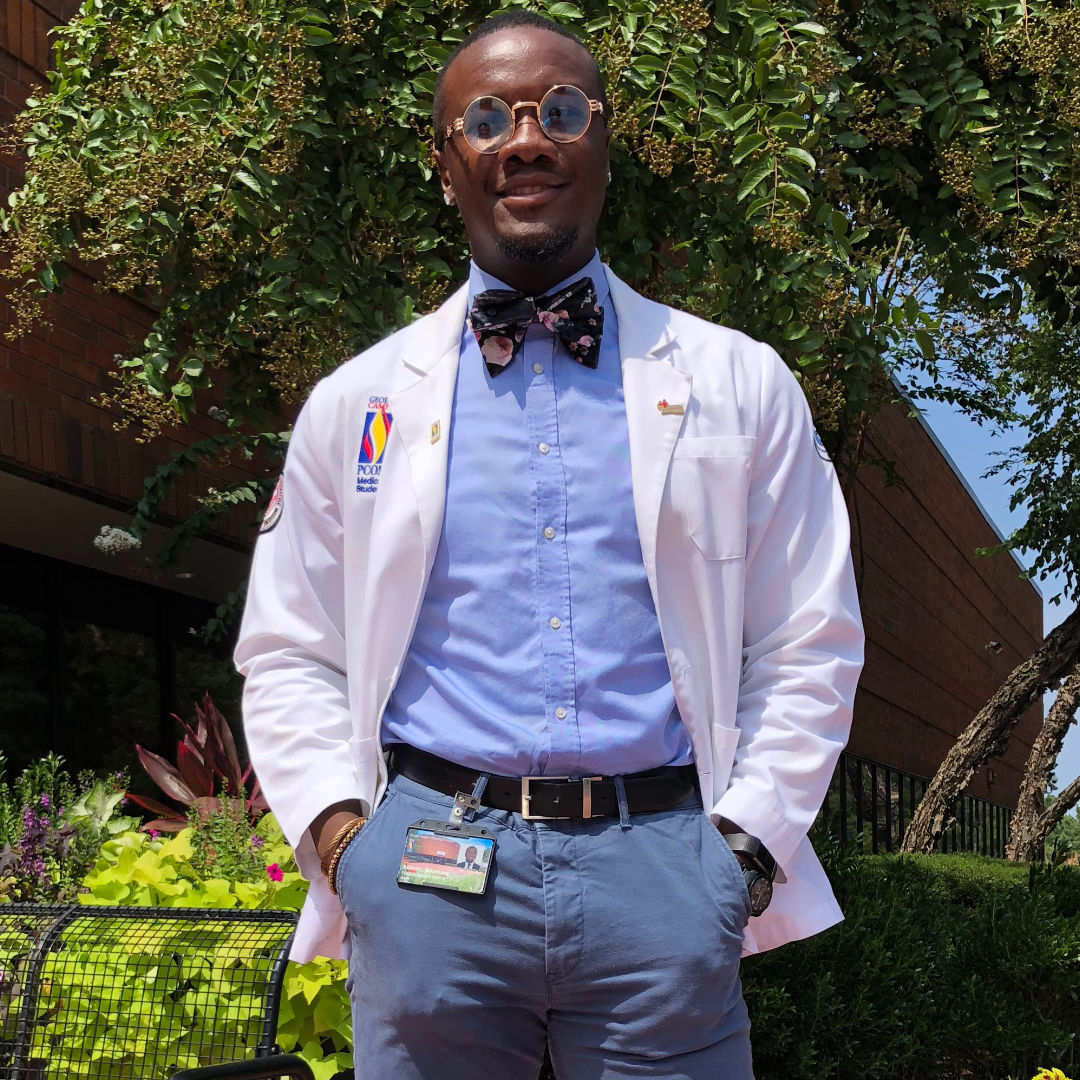Aldwin Soumare knows the impact he can make not only in the Black community, but in the health profession overall. As a fourth year osteopathic medical student, he looks forward to helping his future patients understand the importance of treating the whole person and not just the symptoms of disease.
“Where I am from, you are more likely to be incarcerated or killed in gun violence than to become a physician. So I consider it a privilege to be a medical student, not only for myself but for my community,” said Soumare, a fourth- year medical student at Philadelphia College of Osteopathic Medicine.
“Every day, I think about my future patients, my community and the opportunity to become a leader in a profession that is empowering and impactful.”
Each year, the osteopathic medical profession joins together during National Osteopathic Medicine Week (NOM Week) to raise awareness of osteopathic medicine and the distinctive care osteopathic physicians provide. This year’s observance was held April 18-24 and highlighted the many milestones achieved since the founding of osteopathic medicine in 1892.
Osteopathic physicians, or DOs, practice in every medical specialty and believe there’s more to good health than the absence of pain or disease. Their whole-person approach to medicine focuses on prevention, helping promote the body’s natural tendency toward health and self-healing.
The American Osteopathic Association, with headquarters located in Chicago, represents more than 168,000 osteopathic physicians (DOs) and osteopathic medical students.
“Our distinctive practice of osteopathic medicine provides great care to many patients in the United States,” said AOA CEO Kevin M. Klauer, DO, EJD.
Building on a proud 130-year history of providing distinctive, whole-person care, the osteopathic medical profession continues to chart record-breaking growth and expansion with each passing year. There are almost 135,000 DOs nationwide. Two thirds of actively practicing DOs are under age 45.
The number of female DOs, particularly those under age 45, also continues to grow dramatically. Women have played a key role in the osteopathic profession since the first osteopathic medical school was founded in 1892. Overall, females make up 43 percent of DOs in active practice today and nearly three-quarters of these are under age 45. Keeping pace with national trends, female students constituted a majority in the ranks of first-year osteopathic medical school students.
“DOs are trained to see patients as whole people,” said Dr. Alyssa Cole, DO, a physical medicine and rehabilitation physician. “Using osteopathic techniques and philosophies, I have helped patients undergoing cancer treatments who wanted to avoid taking additional medication and instead prefer alternative therapies.”
Osteopathic medicine is one of the nation’s fastest-growing health care professions. Every year, significantly more osteopathic physicians enter the workforce and help shape the practice of medicine. Today, DOs hold some of the most prominent positions in medicine. They oversee care for our nation’s astronauts, serve in the uniformed services, and even serve as the physician for President Joe Biden.
“While National Osteopathic Medicine Week celebrates 135,000 osteopathic physicians and 35,000 students enrolled in colleges of osteopathic medicine, it really is about the patients and their ability to choose the unique body, mind and spirit approach that DOs offer,” said David Broder, DO, a board-certified internist who serves as president and CEO of the New York Colleges of Osteopathic Medicine Educational Consortium.
An all-time high total of 7,049 osteopathic medical students and past DO graduates matched into residency positions that will start later this year, through the 2022 National Resident Matching Program (NRMP) Match. The incoming class is spread out over more than 41 specialties, including family medicine, diagnostic radiology, neurology, neurosurgery, obstetrics-gynecology, orthopedic surgery and psychiatry.
“The success of our DO students and graduates in this year’s match is an exciting indicator of the continued growth of osteopathic medicine and the remarkable quality of the osteopathic physicians entering the healthcare community,” said AOA President Joseph A. Giaimo, DO.
Notable increases for placements in key specialties, such as diagnostic radiology, neurology, neurosurgery, obstetrics-gynecology, orthopedic surgery, pathology and psychiatry, indicate growing opportunities for DO residents to pave the way for further incorporation of osteopathic principles and practice across all areas of medicine.
To learn more about DOs and the osteopathic philosophy of medicine, visit www.osteopathic.org.






